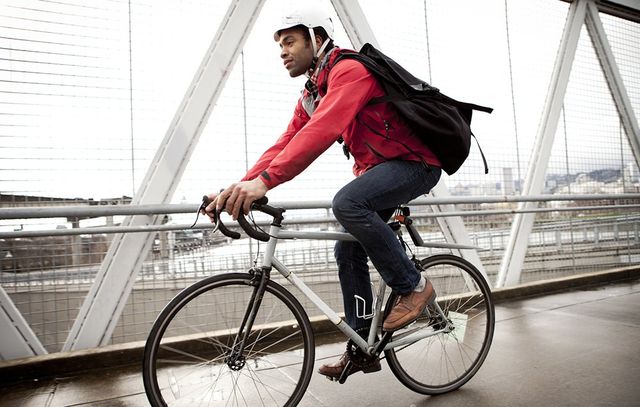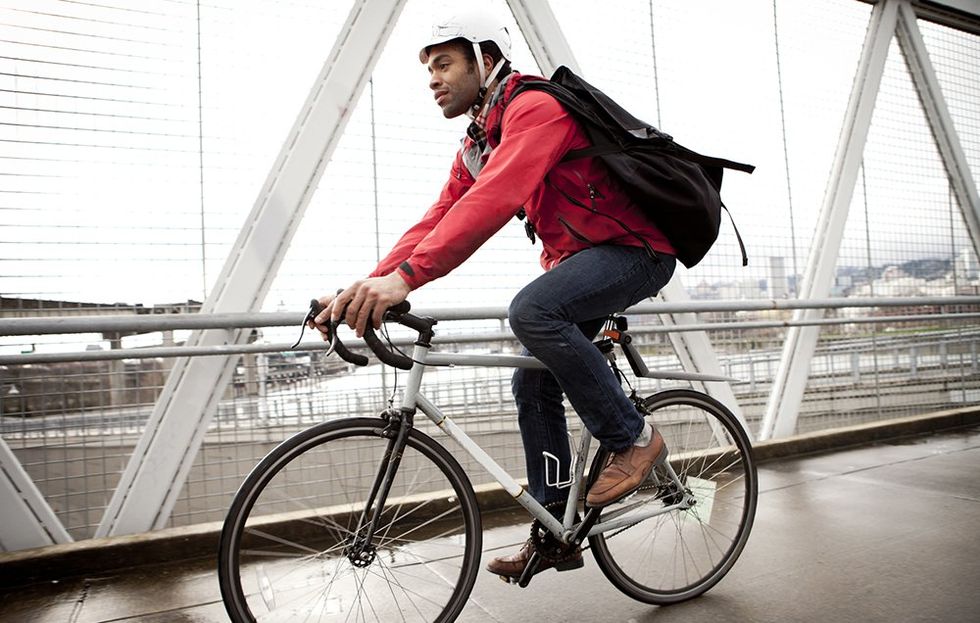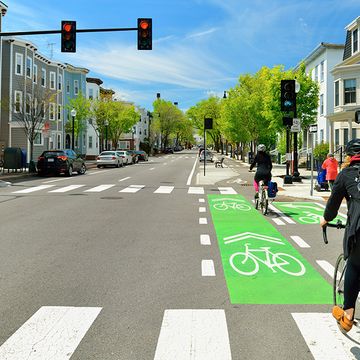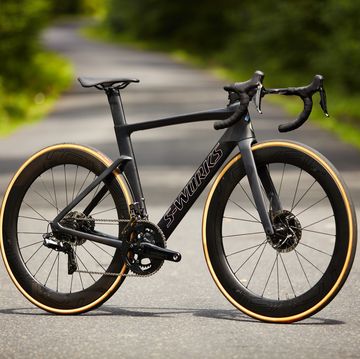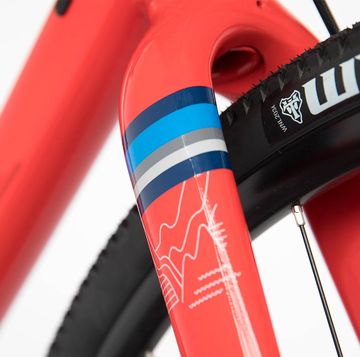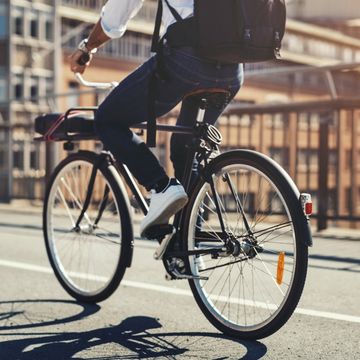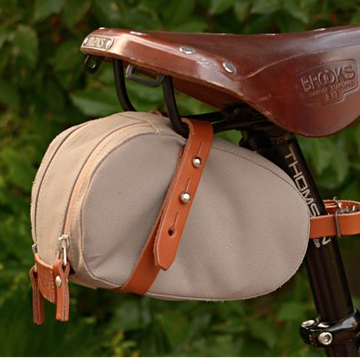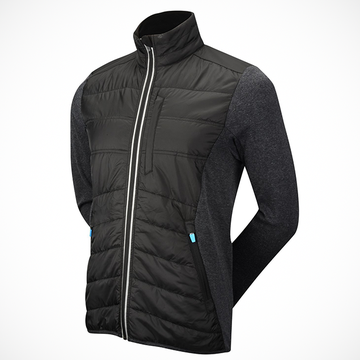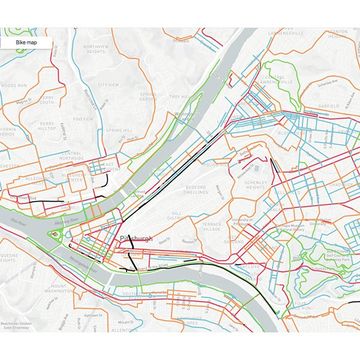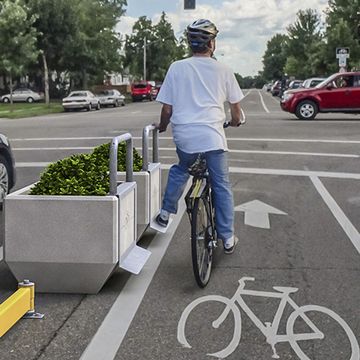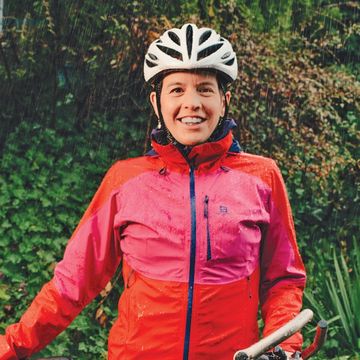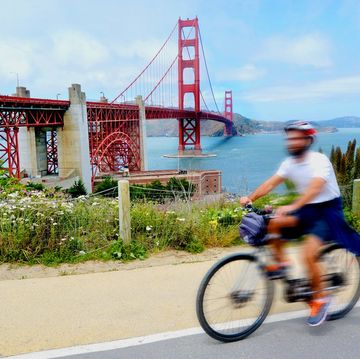Most of us recognize that bike commuting is the ultimate win-win and a positive influence on your fitness, mental health, wallet, and the world around you. But, getting started can be intimidating. What do you do if it rains? How do you handle a too-long commute? And where do you even buy those neon strips of fabric to keep your pant legs out of your spokes?
We reached out to some of the most committed cyclists we could find to learn how they manage common commuting issues. Here’s how they streamline the process and how they recommend smoothing over those early barriers to everyday riding. (If you're still looking for more commuting tips, check out Jason Sumner's book that's full of handy info, like how to prep your bike and how to ride safely at night.)
Organize Your Stuff
Lay out everything you need the night before. Make sure your bike is ready, your work clothes are packed, and you have everything you need to roll out the door. It helps to make a list of everything you need to bring with you, or just set aside a plastic drawer by the door for all your commuter stuff. And set up a USB charging station nearby for bike lights and other gadgets.
Lizbon Grav is no stranger to commuter prep—she's been a bike commuter in NYC, DC, Portland, and the Netherlands since 2001. Over the years, her rides to work and running errands have ranged from 16 miles to 32 round-trip. (Read about her car-free adventures on her blog, loveandtransportation.com.) Here’s what she brings on every commute:
“Versatile tires; an extra layer; rain gear; wool socks; cotton handkerchief (for snot); a cap and neckwarmer; a bandana; a bag of snacks; a flat kit with tools, tubes, a pump, and a dollar bill to use as a tire boot; my Metrocard; $20; backup batteries or lights; phone; and a pocketknife. In winter, I carry heat packs (chemical toewarmers) and rubber gloves for extra warmth while making repairs.”
Your checklist might be shorter or longer depending on what you need, but step one is to get organized.
Pre-Ride Your Route
If you’re a new bike commuter or don't have much experience riding the roads you'll be taking, then a trial run is a great way to build confidence for your first commute.
Super-commuter Erica Goddard rides 16 miles round-trip to her job in Seattle. She recommends using a trip planner, like the bike mode in Google maps, and reaching out to other cyclists to find the best route. Then, do a test run.
“When I move to a new city I always bike my route on a day I don't have to actually get to my destination on time, like a weekend when I'm not working, to make sure I actually know where I'm going and that it feels safe,” she says.
(Obsessively) Check the Weather
Download Dark Sky to tell you when and for exactly how long it will rain in your location. With more pinpointed accuracy than other weather apps, it’s a useful tool for deciding whether to head out early—and how much rain gear to pack. (Of course, if you want to be on the safe side, you might want to always keep yours with you.) Shower’s Pass and SealSkinz make great waterproof socks, gloves, overshoes, and other equipment. And keep in mind that bike lights will always make you more visible in the rain.
“Bike commuting means you're going to become a little obsessed with weather, but you're also going to get accustomed to just being prepared for it,” Lizbon says. “As a messenger friend used to say, ‘If there's a 20 percent chance of rain, there's a 100 percent chance that I will have raingear on me.’”
“Nothing is truly waterproof,” she warns; “it's always just buying you time until full soakage. I like Showers Pass and prefer the rain pants that zip off at the knee because the full pants get too hot.”
Gear Up With Racks, Fenders, and Panniers
Backpacks and messenger bags are easy enough, but if you really want to commit to everyday riding, your back will thank you if you get a rack and panniers. Lizbon recommends a convertible pannier that can be worn as a backpack—that way it's easy to tote around when you’re off the bike.
“Banjo Bros has a nice, not crazy-expensive one, and Ortlieb is still the gold standard for waterproof bags,” she says.
Bring Your Coffee Along
A great way to get out the door earlier is to pack up your coffee and bring it with you, whether in a thermos or a special carrier. Portland company PDW makes a handy mount called the Bar-ista that regular commuter John C. Meyers swears by.
“I've used it to transport coffee, soup, sour cream and other things,” he says. “I also occasionally take long rides on the weekend and being able to take coffee with me makes it easier to convince myself it's a good idea to ride.”
Divide the Ride
Is it unsafe or too long to ride all the way to work? Go multi-modal and split up your commute. Check out if there are any buses or trains in your area that allow bikes on board. If you live somewhere without good public transit, park your car somewhere closer to the office and ride the rest of the way in. You’ll still cut down on your driving mileage and reap the health benefits of bike commuting, even if you still have to use some gas.
Find Clothes that Work For You
Some of us like to commute in work clothes, others find it easier to ride in kit and change when we get to the office.
Lizbon says she’s found that riding in a mix of cycling-specific clothes and work clothes works best in terms of changing quickly when she arrives.
“What worked for me was having my business shoes and a blazer or cardigan at work, and riding in a dress or skirt with bike shorts under it and a non-wrinkly loose-fitting or stretchy blouse,” she says. “I just stuck with ordinary clothes that were cut well for bicycling (e.g., knee-length, A-line dresses) and not too wrinkly. More thin layers are always superior to fewer thick ones, and tend to look better too. As far as fabrics go, I look for merino, cotton pique (doesn't wrinkle), and rayon.”
Lizbon says she also swears by Uniqlo’s ‘Heat Tech’ line of base layers ant thin merino sweaters, which are easy to ride in but look like worth clothes.
Check out our roundups of casual bike commuter clothes for men and women, if you're looking for ideas.
Flat-Proof Your Ride
The best thing you can do to ward off flat tires is start carrying a flat kit and pump with you. There’s just something about being super-prepared that seems to warn the universe not to test you. The second best thing you can do is to get tough tires that can handle rough road surfaces.
“For skinnier road tires I like Maxxis Refuse because they almost never flat,” Lizbon says. “But really I prefer a more versatile tire like Kenda Kwik Trax (the poor man's Schwalbe Marathons) in about 28C to 32C. Schwalbe Marathons are bulletproof, but the bead is so stiff that if you ever do get a flat you'd better carry a Kool Stop Tire Jack.”
Have a Contingency Plan
Carry a bike lock with you in case you need to make emergency stops. Know where the nearest bike shops are located. Pack water and a snack. Have some cash for public transit. And it never hurts to stick a multi-tool in your pocket.
“It's helpful to have a contingency for when things happen that you can't fix yourself (or can't right away) or if something bad happens & you get hurt,” Lizbon says. “For me that meant having a place or two I could safely store my bike inside overnight (like my favorite LBS, a friend's house, etc.) and some form of public transportation as a backup. I also firmly believe in bike commuting in shoes you can also walk in if you have to. One night the bridge I crossed every day flash-froze and I had to walk the bike the whole way.”
Lizbon also carries salt packets for hot days and a homemade sports drink made from half coconut water and half tap water, with a small amount of sea salt.
